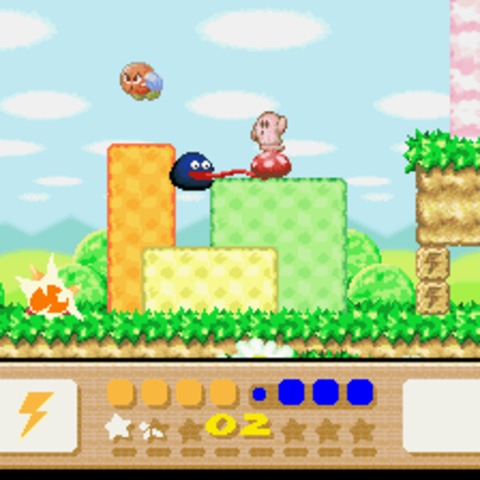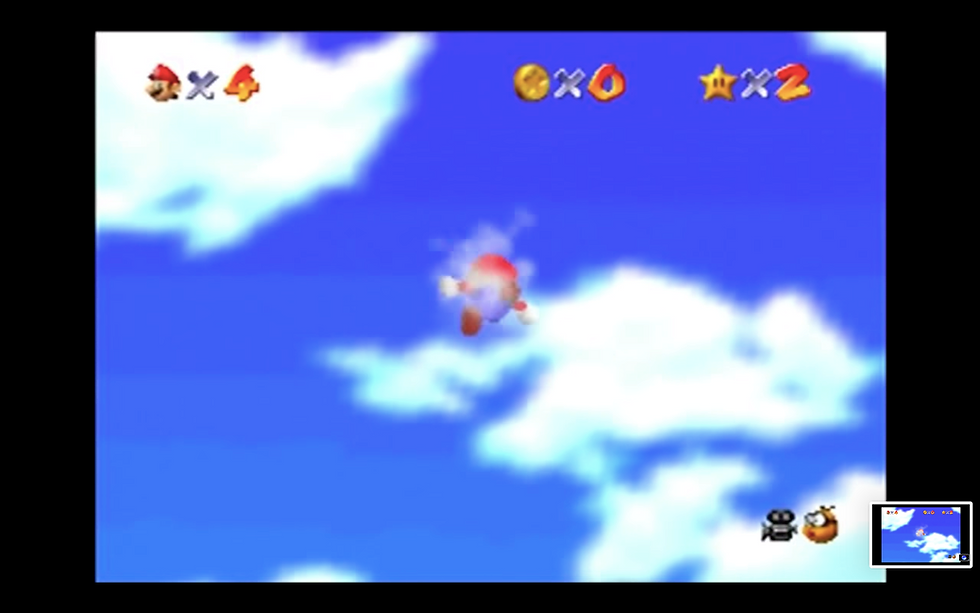Game Review: Kirby's Dreamland 3
- Jose Morin

- Oct 17, 2019
- 4 min read
In Kirby’s Dreamland 3 (1997), the plot starts with Kirby and Gooey fishing on Planet Popstar when, all of a sudden, a large, ominous black cloud, Dark Matter, starts to hover above Popstar, breaking the rings around the planet. This cloud then began to send out small black clouds around the sky, and some of the dark energy spread to the land, manipulating King Dedede and his minions to become evil. One of Kirby’s friends, Coo, comes to warn Kirby that Planet Popstar is in trouble. Kirby and his friends band together collecting star hearts throughout Popstar, and fight the controlled King Dedede, his minions, and Dark Matter. In the end, Kirby has a battle with King Dedede, then Dark Matter, and having to then have a final fight with Zero, a previous villain in the Kirby franchise that resembled a red eye, with Zero’s defeat finally restoring all peace to the universe. (Kirby Fandom.Wiki.com)

The mechanics of this game are similar to those of other Kirby platform games: the suction and spitting of enemies, copying abilities, movement done through floating, the liberty to revisit certain platforms, and the use of his friends and the combination of their abilities. To add on, Kirby’s Dreamland 3 incorporates an aspect similar to that from Kirby’s Dreamland 2 (1995), where Kirby is able to combine his copying ability with that of his friends in order to create a new skill, like Kirby’s friend Rick the Hamster’s rock ability allowing Kirby to roll on Rick, rather than Kirby becoming a stone himself. The focus on ally based gaming is emphasized even further, with the inclusion of Gooey, Kirby’s primary friend. At any point in the game, Kirby is allowed to spit out Gooey, sacrificing 2 hit points, in order to receive help during levels, or swallow Gooey, regaining 2 hit points. Levels in Kirby’s Dreamland 3 fit very well into these mechanics: having vertical levels meant for floating (World 2-4), blocks only able to be broken through specific enemy copied abilities: ice, fire, cutter, ect,., introduced in World 1, and obstacles only able to be passed through the collaboration with Kirby’s allies (World 2-2).
(Pictures above show Kirby's friends, Gooey in action, an illustration of the various friends and the copy ability combinations. Sources: https://www.youtube.com/watch?v=gGUQ0SR24UE, https://www.giantbomb.com/kirbys-dream-land-3/3030-11068/, and http://www.kirbysrainbowresort.net/games/dreamland3/manual/)
In this review of Kirby’s Dreamland 3, I will be exploring the concept of Kirby’s spectral identity and its ephemerality. Throughout this game, Kirby is able to copy the abilities of many enemies and collaborate with friends in order to create novel skills. However, with each individual ability, and which each new pair, Kirby constructs a new identity. His sense of self becomes whatever power he inhales, losing his ability to suction for said time being. Depending on the player, this ability can be kept for different amounts of time, losing the power and label only when damaged or through voluntary effort, for the most part.
On certain levels, the need to utilize specific skills and friends becomes evident, forbidding Kirby from being able to continue unless utilizing said skills/friends. The game forces Kirby and the player to take on different identities in order to continue, never allowing Kirby to have one certain identity and skill set. The need to continue and save Kirby’s beloved Planet Popstar pushes the player to inhale different enemies present and, if need be, go back and inhale different enemies for their powers. For example, in World 1, certain blocks will have images of different abilities, and the only way to get past them is to utilize said abilities on them, with some walls having more then 2 different blocks on them. This is then similarly represented when certain levels force you to utilize friends, like World 2-2 where Kirby’s friend Kine the fish must assist in swimming against the otherwise impossible currents. When Kirby is in their friend’s bodies, his abilities take on a new form, with Kine’s becoming almost comical in nature: spark becomes a lightbulb, fire becomes a fire belch, and stone is a stone fish that’ll flop onto enemies. It is through these transformations that Kirby’s identity becomes a thing of spectral and ephemeral characteristics.

In this game, unlike other future releases, Kirby keeps most of his appearance the same, however, it is through the constant need to employ different skills and friends that Kirby never stays as his own being. It is to the players need, curiosity, and best interest to constantly change powers and friends, never really keeping the “plain” or original Kirby format. Kirby’s identity is spectral, as in belonging on a spectrum due to the many different forms his copied abilities can take shape, when utilizing his friends, even changing the shape of Kirby and the friend, as seen by Rick the Hamster and the Ice ability. With this spectrum of abilities, the need to change is given a plethora of options in which the player can convert Kirby’s form into one of many shapes. The need to change Kirby’s being is strongly present, even forced, but in the least, the game allows some freedom with some of the combinations, only needing, in some cases, either a specific friend of copy ability.
Kirby’s identity stands as a being a cheerful, pink orb of positivity, who controls the ability to float, suction, and copy the abilities of enemies. Yet, in this game, the mechanics rely on an array of different, but specific abilities and friends in order to have progression. This need to continuously copy and employ specific friends almost shadows over Kirby, having the player remember mostly only that of the abilities and friends with Kirby, and not Kirby on his own. Of course, this is not always the case, as Kirby’s identity of copying abilities is his main and most focused on attribute, making this his most perceived identity. However, once the player only sees Kirby for one of his skills, the player starts to deny Kirby of any autonomy out of one of his many skills, belittling who they are as a being.

Bibliography:










Comments